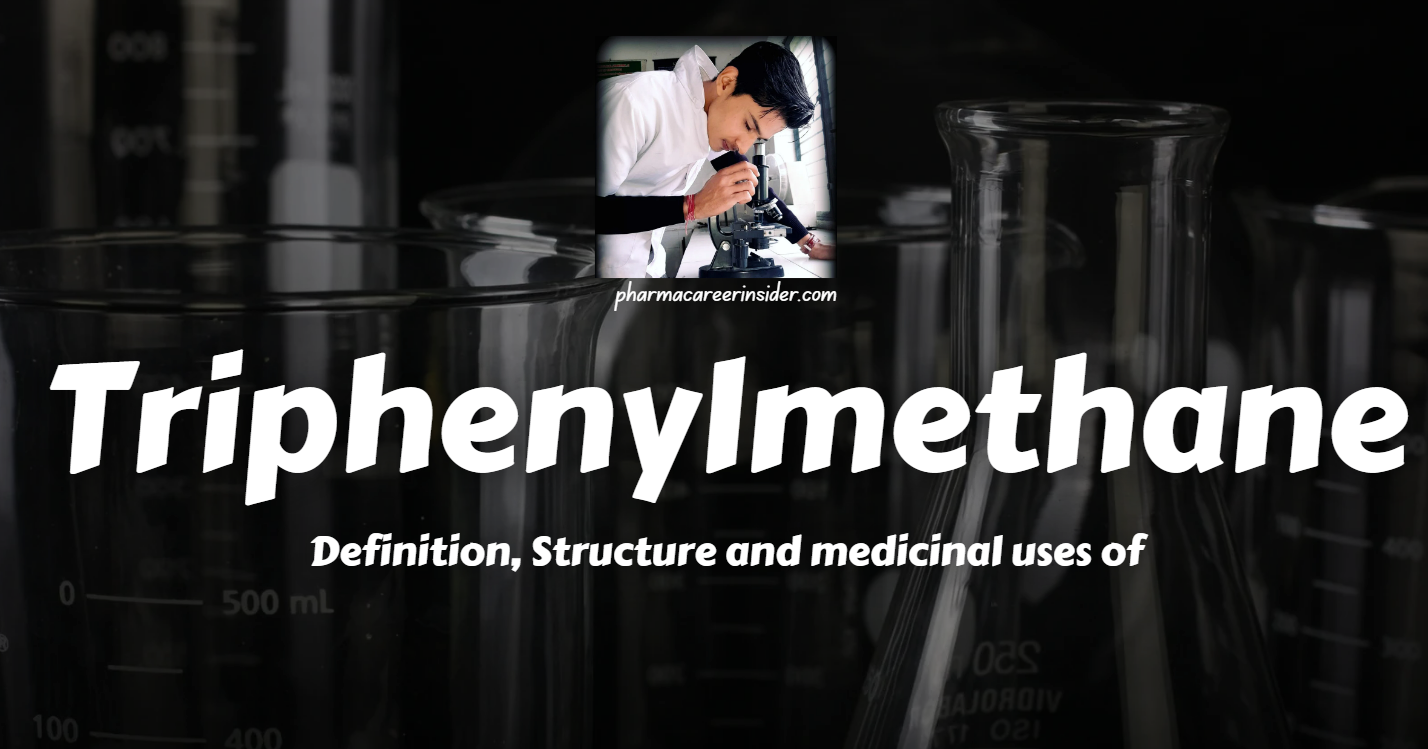1. Chemical Structure of Triphenylmethane
Triphenylmethane (C₁₉H₁₆) is an organic compound consisting of a central methane (CH) carbon bonded to three phenyl (C₆H₅) groups. This structure results in a highly stable, symmetrical molecule with an sp³-hybridized central carbon. The molecular formula of triphenylmethane is C₁₉H₁₆, with a molecular weight of 244.33 g/mol. It serves as the parent structure for many synthetic dyes, such as crystal violet and malachite green, which are widely used in textile and biological staining applications. While triphenylmethane itself is colorless, its derivatives are known for their vibrant colors due to extended conjugation and resonance effects.

In this structure, three phenyl groups (C6H5) are attached to a central methylene group (CH).
2. Properties of Triphenylmethane
Physical Properties:
- Appearance: Colorless to pale yellow crystalline solid or powder.
- Molecular Formula: C₁₉H₁₆
- Molecular Weight: 244.33 g/mol
- Solubility:
- Sparingly soluble in water
- Soluble in organic solvents like ethanol, ether, and benzene
- Melting Point: 92–94°C
- Boiling Point: ~358°C
- Density: ~1.1 g/cm³
- Refractive Index: ~1.626 (at 20°C)
- Polarity: Non-polar
- Stability: Stable under normal conditions but sensitive to strong oxidizers and UV light.
Chemical Properties of Triphenylmethane (C₁₉H₁₆)
Aromatic Structure: Contains three benzene rings attached to a central methane (CH) group, making it a highly conjugated system. Exhibits resonance stability, but the central carbon is electrophilic due to the electron-donating effects of the benzene rings.
Acidity & Basicity: The central hydrogen (CH) is weakly acidic, but triphenylmethane itself is not significantly acidic or basic. However, its derivatives, such as triphenylmethyl (trityl) cation (C₁₉H₁₅⁺), are stable due to resonance.
Reactivity with Acids: Can react with strong acids (e.g., H₂SO₄, HCl) to form the triphenylmethyl carbocation, which is highly stable due to delocalization over the three benzene rings.
Oxidation Reactions: Can be oxidized to form triphenylmethanol (C₁₉H₁₆OH) or further to triphenylcarbinol derivatives. Under strong oxidation conditions, it may degrade into benzoic acid or benzophenone derivatives.
Reduction Reactions: Can be reduced using strong reducing agents to form benzyl-type compounds.
Halogenation: Under controlled conditions, it can undergo halogenation (chlorination, bromination, or iodination) at the central carbon.
Formation of Dyes: Triphenylmethane is a precursor for triphenylmethane dyes, such as malachite green, crystal violet, and rosaniline, through nitration and further modifications.
Polymerization Potential: Its derivatives can participate in polymerization reactions, forming resins and polymers used in coatings and dye industries.
3. Applications of Triphenylmethane
Dyes and Pigments: Triphenylmethane derivatives are widely used in the dye industry. The introduction of different functional groups to the phenyl rings allows for the synthesis of a variety of colored compounds. For example, crystal violet and malachite green are common triphenylmethane dyes.
Biological Stains: Triphenylmethane dyes find applications in biological staining. Crystal violet and gentian violet are examples of dyes used for staining tissues and microorganisms in laboratories.
Indicators: Certain triphenylmethane compounds serve as pH indicators. They exhibit different colors in acidic and alkaline environments, making them useful in analytical chemistry.
Antiseptics and Pharmaceuticals: Certain triphenylmethane derivatives actively possess antiseptic properties. Historically, gentian violet has been used as a topical antiseptic. Furthermore, researchers have investigated certain triphenylmethane compounds for potential pharmaceutical applications.
Photographic Chemicals: Photographic chemical formulations have actively employed triphenylmethane derivatives, particularly in the development of color photography.
Research and Synthesis: Triphenylmethane serves as a valuable building block in organic synthesis. Its versatility allows for the creation of various derivatives with distinct properties, making it useful in the development of new materials and compounds.
4. Health and Safety Considerations of Triphenylmethane
Triphenylmethane and its derivatives should be handled with care. Exposure to these compounds may cause skin and eye irritation.
When handling any chemical, individuals should actively take appropriate safety measures and use personal protective equipment.
Triphenylmethane is a versatile compound with diverse applications in the dye industry, biological staining, indicators, antiseptics, pharmaceuticals, and research. Its unique chemical structure allows for the synthesis of numerous derivatives, contributing to its significance in various fields of chemistry and industry.
Visit to: Pharmacareerinsider.com and Pharmaacademias.com

